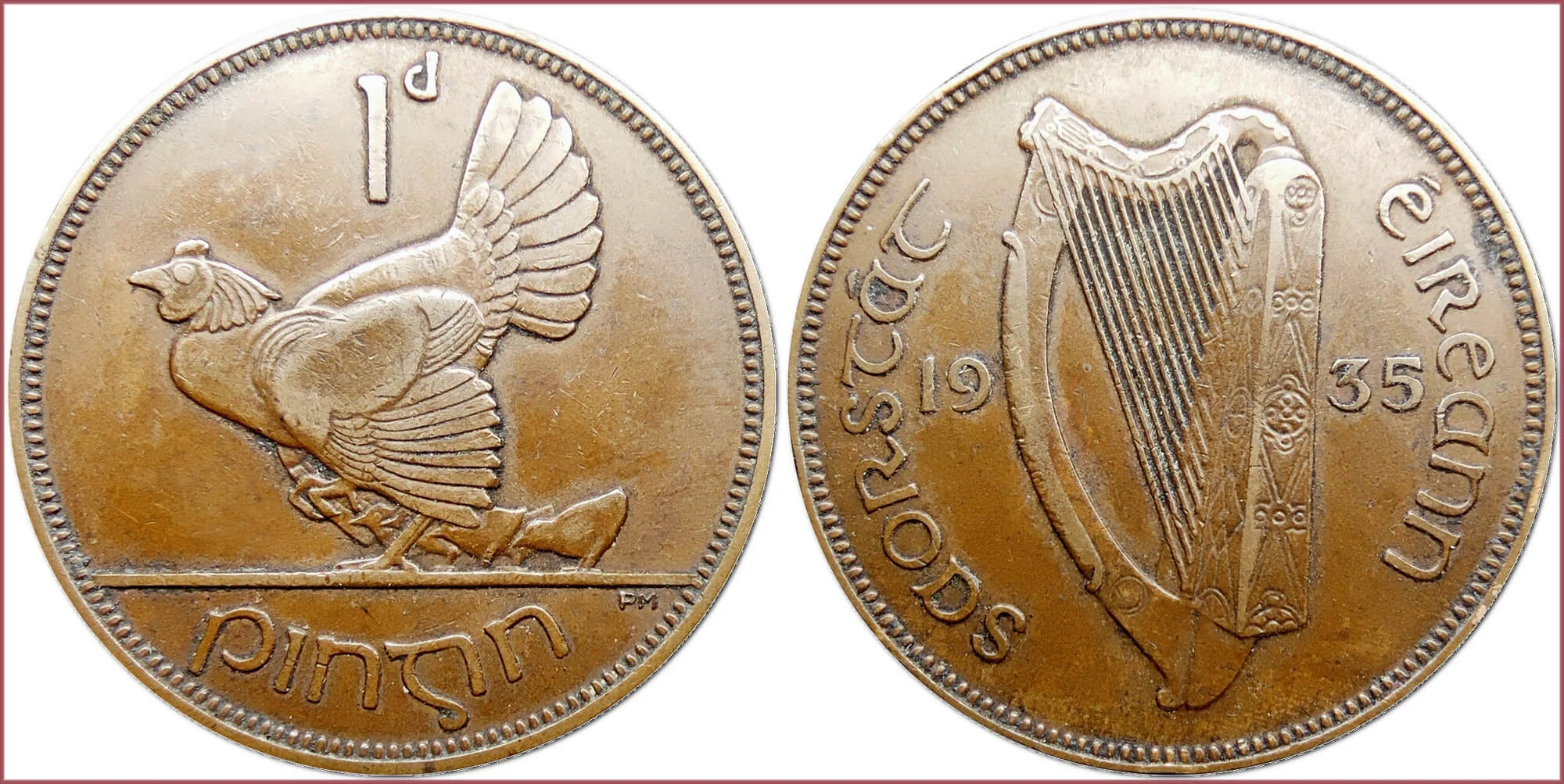PINGIN: COIN OF IRELAND
1 pingin, 1935: Irish Free State
The legend on the coin is made in Gaelic type.
PINGIN (the combination of the letters "GI" is replaced by the corresponding ligature, which can be seen on the coin itself in the designation of the denomination between the symbols "N" and "N"; I couldn't find her writing online to demonstrate here): penny.
Prior the mid-20th century Gaelic type was the main typeface used to write Irish; now it is usually replaced by Roman type.
1d: the denomination on the coin is indicated both in Irish penny (pingin) and in traditional ancient units — denarius.
Why was pence abbreviated with the letter "d" and not "p"? — The minting of pence coins over 1000 years ago began on the model of Roman denarius. This explains the presence of the symbol "d" (from the Latin "denarius") on old pence, while after the 1971 reform in Great Britain (and Ireland too) and the introduction of the decimal monetary system to denote pence began to use a more logical symbol — "p".
PM: by the micro font are indicated the initials of the author of the coin design (engraver) — Percy Metcalfe (English artist, sculptor and designer).
Chicken (hen) with chicks.
SAORSTÁT ÉIREANN: Irish Free State.
Celtic harp also known as Trinity College harp / "Brian Boru's harp" (late-medieval Gaelic harp — "cláirseach") as coat of arms of Ireland.
Royal Mint (United Kingdom).
Mintage: 5.472.000.
- Bronze: 30 mm - 9.38 g
- Reference price: 1.5$
COIN PINGIN — WHERE & WHEN (coins catalog: by names & emitents)
- IRELAND (1928-1968) — Irish Free State + Republic of Ireland: pingin = 4 feoirling = 1/12 scilling = 1/240 punt
PINGIN as coin name.
In 2002, Ireland began minting euro cent and euro denominated coins. Before that, the official monetary unit of the state was the pound, consisting of 100 pence.
However, the period of Irish coinage between the 1920s and 1960s can be considered the most interesting for numismatists. At that time, a number of coins were issued (it should be noted that the currency was also the pound at that time), the denomination of which was indicated in the Irish language: pound — punt, crown — coróin, florin — flóirin, shilling — scilling, penny — pingin, farthing — feoirling. All these denominations and the ratio between them were subject to the traditional British monetary system, in which a penny (in Ireland — pingin) was 1/240th of a pound (in Ireland — punt).
It is interesting that the pingin denomination coins had the mark "d" instead of the logical "p". In fact, it is a tribute to history: the mention of the denarius as one of the earliest coins in the British Isles.











